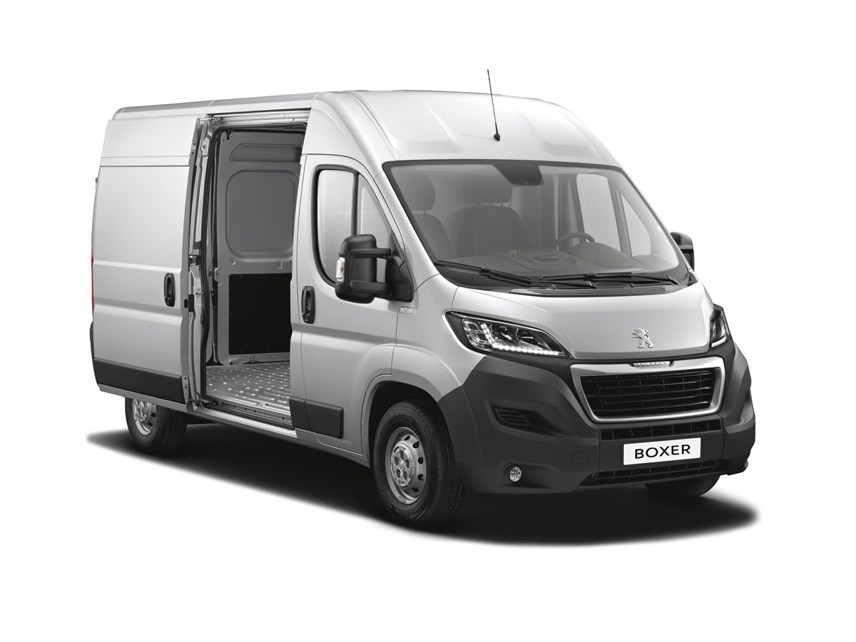Review
Britain’s LCV market is buzzing at the moment as the country continues its economic recovery. But one manufacturer stands head and shoulders above the others when it comes to growth.
Peugeot has achieved a 52% rise in its registrations so far in 2014 in a market up 16%, overtaking both its partner Citroën and Vauxhall to take third spot in the chart. This feat is even more extraordinary considering the company did not have any new products to offer at the time.
One of the reasons for the rise is a new focus on vans which Peugeot didn’t really have before – traditionally it has been seen as a car brand that also sells vans.
Now that has all changed. The manufacturer has a new head of van business sales, Nick Crossley, and it has been quietly rolling out a new network of business centres, offering a bespoke fleet service to existing and potential customers.
With a revised Boxer van and an improved dealer network, Peugeot is fully expecting to increase its sales even further as the year progresses.
Crossley told Fleet Van: “When the new Boxer goes on sale, we will have the most extensive range of vans on offer in the history of the company and with our new network of business centres, we want to deliver exceptional levels of service to fleet customers – we will be offering a bespoke service to take the hassle out of their daily lives.”
Almost 90 dealers have signed up to the business centre programme – about 40% of Peugeot’s network – and they have to comply with 35 standards before gaining accreditation.
At present the Boxer accounts for 25% of all Peugeot van sales, while the smaller Partner takes 52%. But the need to keep updating product is paramount, espe/cially as Ford has just launched its sophisticated new Transit into the market, which will go head-to-head with the Boxer.
Peugeot’s van features a new grille, daytime running lamps as standard with LEDs as an option, different bumpers and two circular recesses for the front fog lamps. The front will be noticeably different from those of the Boxer’s twin brothers the Citroën Relay and Fiat Ducato, helping to distinguish it as a Peugeot product.
There’s also a new steering wheel and the dashboard gets a makeover to provide a more upmarket appearance.
The old Boxer had cup holders in the pull-down desk that pops out of the back of the middle seat. This design has been modified and there is now a single cup holder mounted in the middle of the dash.
Ride and handling, as with the old model, are excellent and the new steering wheel feels a little more comfortable than the old one.
Professional variants, which are expected to take 40% of all sales, come with a five-inch colour touchscreen, which allows the operation of functions such as audio streaming, reading SMS text messages and an optional integrated satellite navigation system, as well as the display of the image from the reversing camera.
Under the bonnet is a 2.2-litre turbodiesel engine offering 110hp, 130hp or 150hp, while a 3.0-litre unit produces 180bhp. This is unlikely to be a big fleet seller.
Although I normally recommend lower-powered variants for fleet purposes, I just loved the sweet tone and willingness of the 130hp engine. Even loaded, there was never any shortage of power, while I feel that heavy loads and hills could prove a problem for the 110hp.
On the L1 van, there is no difference in the official fuel consumption figure between the two power outputs, while going up to L2, the 130hp version – with stop-start fitted – is actually better than for the entry level engine at 38.2mpg instead of 37.7mpg.
The engines are now fitted with a timing chain that lasts for life and servicing intervals have been extended to 30,000 miles or two years. The new model also gets larger brakes.
Electronic stability control comes as standard and there are several other safety systems on offer such as anti-slip regulation, a lane departure warning system, tyre pressure monitoring system, hill start assist, hill descent control and curtain airbags.
As with the old model there are four load lengths, three roof heights and the usual array of conversions.
When it comes to body options, Peugeot has obviously heeded the business advice: “If it ain’t broke don’t fix it.”
















